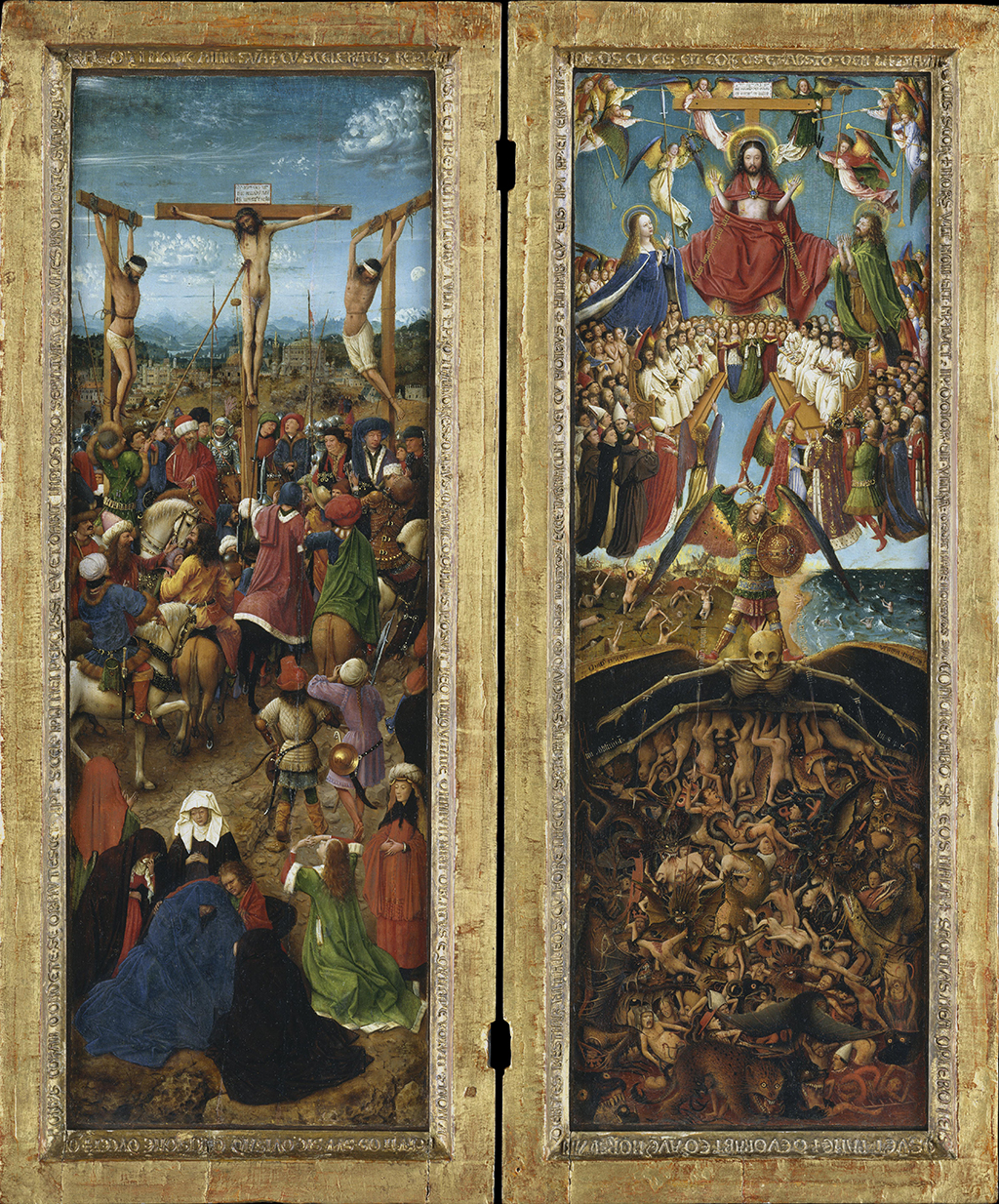This painting forms one panel from the Crucifixion and Last Judgement Diptych which Jan van Eyck put together in around 1430–40. The Crucifixion is a complex composition which forms the left hand side of the two panel piece.
This painting captures Christ's followers grieving during this distressing moment. A number of figures hang from wooden crosses at the top of the painting, with a lush landscape scene behind them. Further down is a series of figures which includes soldiers as well as passers by who are intrigued by the goings-on. There is a great mixture of emotions here, with the mourners nearest us at the foot of the composition, huddled together and attempting to comfort each other about the loss of this iconic figure. This is one of the most significant passages of Christian scripture and teaches its followers several different moral ideas that lie as fundamental to the overall religion. It is for this reason that we find so many interpretations of this scene within European art across several centuries.
We see specifically Jerusalem in the background, and Van Eyck would add it into several other pieces within his career, mainly due to his focus on key religious moments that occurred in and around this famous city. The sky is aggressive in nature, as if the weather is reflecting the mood of those on the ground and the sad events of the day. We do know that the artist would call upon the help of some of his assistants for both of the panels of this diptych, and that is understandable when considering the number of figures featured here which would each have taken some time to complete. Most likely Jan would have placed the layout on the panel from which others took take guidance, but he would always concentrate on the key parts of the scene to ensure the highest quality in the most important areas. There was no documentation made around who specifically helped him, and so we can only really discuss the parts that he did himself.
The overall diptych (the name for a two-paneled artwork) can be found within the collection of the Metropolitan Museum of Art in New York, USA. They host a huge number of artworks and antiquities, covering many specialist areas which would suit pretty much any taste. They have a specific area in the museum devoted to European paintings and sculpture in which you will find this piece alongside a number of other related artworks which can further expand your knowledge of Flemish, Dutch and Netherlandish art from around the time of Jan van Eyck. Some of the other artists to look out for here include Rogier van der Weyden, Robert Campin and Albrecht Durer, as well as sculpture by Gian Lorenzo Bernini and also Auguste Rodin. Elsewhere a wide selection of items from many different civilisations will ensure that this is the type of venue that can be visited many times over.



 Jan van Eyck.jpg)

